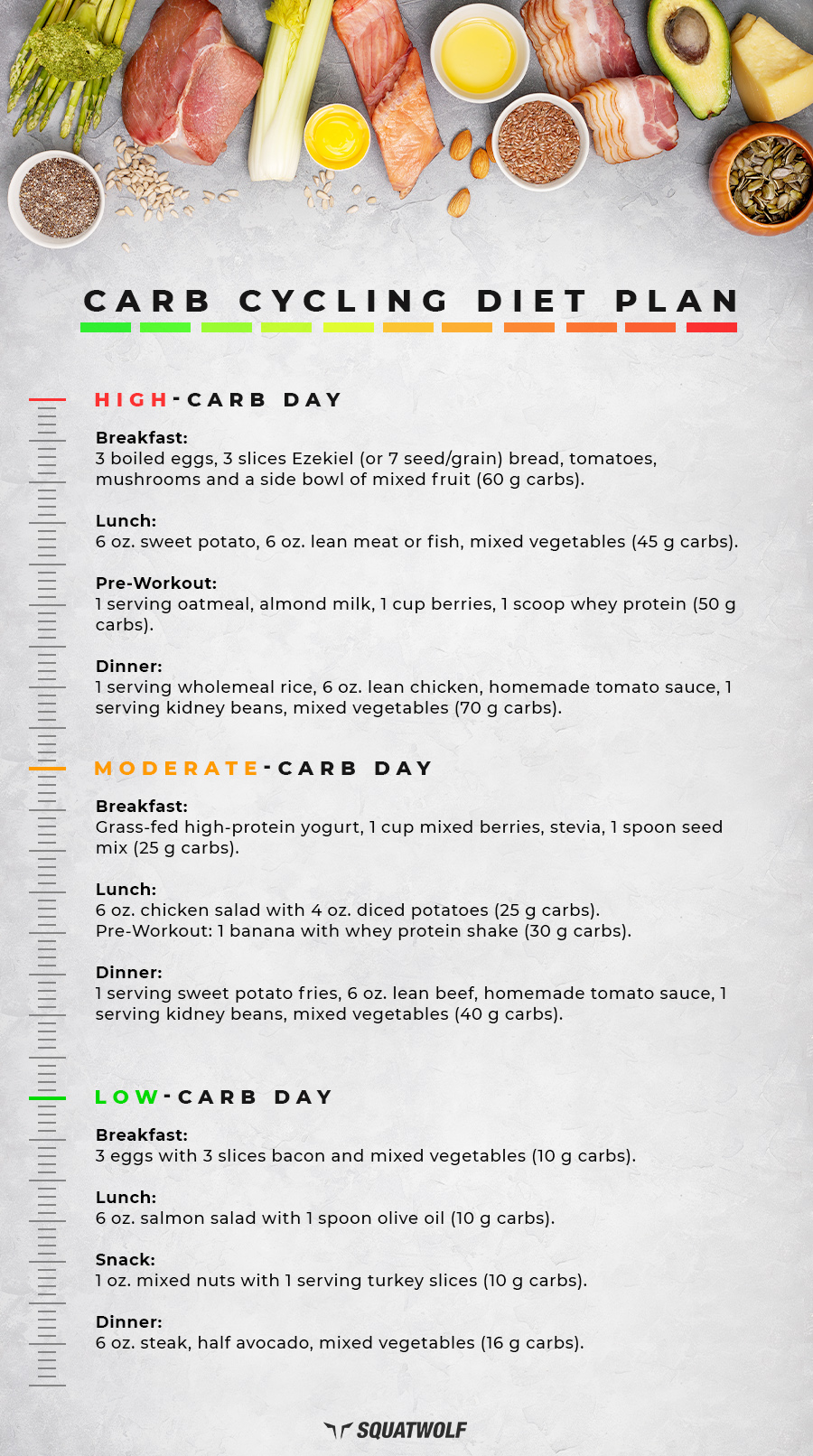Carbohydrates are the biggest topic when discussing any diet. Some people have their criticism against carbs and others say it is just as important as any other nutrient. Well, we aren’t an authority to comment on that, but we can still talk about what carb cycling is and how it could help you lose weight and body fat.
This blog will feature a scientific breakdown of the process of carb cycling and how you can apply it to your diet.
What is Carb Cycling?
In its simplest form, carb cycling is when you cut down on your carbohydrate intake to maintain metabolism and prevent any fat loss plateaus along with your workout performance.
This means that some days you are taking more carbs and other days you are taking fewer carbs, giving you both the benefits of taking carbs and being on low carbs.
This may sound all fine and dandy, but this diet technique is aggressive and is usually suitable for physique athletes who tend to have higher nutritional adherence and require a more meticulous approach. This isn’t a long term diet plan either, in fact, prolonging this strategy can actually be harmful to your health.
There are a number of factors that affect the way you program your carb intake:
Body Goals:
Some people will reduce carbs when working towards shredding and increase intake during bulking season.
Training and Rest Days:
One way that is quite popular amongst most people is lowering the carb intake on rest days and increasing it during training days.
Type of Training:
This factor is pretty straightforward, the more you work out, the higher the carb intake and vice versa.
Body Fat Level:
The leaner you become, the more high-carb days or blocks you need to include and vice versa. This all has to do with your body fat level.

The Science behind Carb Cycling
Carb cycling is basically fueling the body’s need for energy and glucose.
High-carb days are a way of fueling the body and increase glycogen in the muscles, this means you will improve your performance and reduce the breakdown of your muscles. On the other hand, low-carb days force the body to use fat as fuel when performing tasks, making it a great way to reduce weight.
Another big component of carb cycling is your body gaining the ability to manipulate insulin. Low-carb days and targeting your carb intake around your workout may improve insulin sensitivity, a vital marker of health.
Carb Cycling Helps Lose Weight
It is the basic mechanism behind any diet that if you intake a deficit of calories against the calories you burn in a day, you will lose weight. If this is coupled with carb cycling, surely it will make you lose weight since the deficit of carbs will force your body to burn fat to gain energy and compensate the calories.
Although it’s much more complex when it comes to adherence, some people may enjoy the flexibility of carb cycling. This improves both adherence and shows amazing long-term results.

Learn more about Caloric Surplus and Deficit and how it works.
How Many Carbs Should I Eat?
To determine how many carbs you should intake on your highest day during this program, start by consuming 1-1.5 grams of carbs per pound of your body weight. Begin with 1.5 grams and adjust according to your results.
Some people are more “carb sensitive” than others, this is why there is always a need for some tweaking in this program. Your daily activity level, training intensity, age, and even sex, will determine how many carbs you need in a day. It is a general rule to intake a maximum of 200 grams of carbs per day, making it a good place to start.
Here’s a rough idea on how you can go about dividing your carb cycling routine:
- Day 1: 150 grams
- Day 2: 100 grams
- Day 3: 50 grams
- Day 4: 125 grams
- Day 5: 200 grams
You will need to drop 50g every day for 3 days and then increase your intake by 75g the following two days. People tend to load up on healthy fats on low carb days or rest days to compensate for the loss of calories.
It is important that you increase your fat intake, otherwise, you will burn more fat as fuel on the low-carb days (specifically days you are training hard, doing cardiovascular workouts, and cutting calories).

Reaching the Plateau
There will come a point where you will stop losing fat, this is called a fat-burning plateau and during this stage, you will have to change your diet.
There are two ways you can overcome this plateau;
- Have 3-4 high-carb days in a row, or have a cheat meal one day of the week
- Go to low carbs for three days a week and high carbs for the next day. (Make sure you don’t go more than three days on low carbs as this could result in cloudy thinking since your brain needs a certain amount of carbs to function properly)
These two steps will kick start your metabolism and enable the fat burning process to resume.

Diet Plan
There isn’t an exact rule on how to take the carbs and what exactly to eat since every person is different their body will respond in a different way.
Here’s a general diet plan you can follow or tweak according to your needs or use it as it is.
 You need to understand that carb cycling is meant for people more nutritionally advanced and will not help beginners. It is important to be calculated and follow it religiously. Try it out if you think you have what it takes!
You need to understand that carb cycling is meant for people more nutritionally advanced and will not help beginners. It is important to be calculated and follow it religiously. Try it out if you think you have what it takes!

